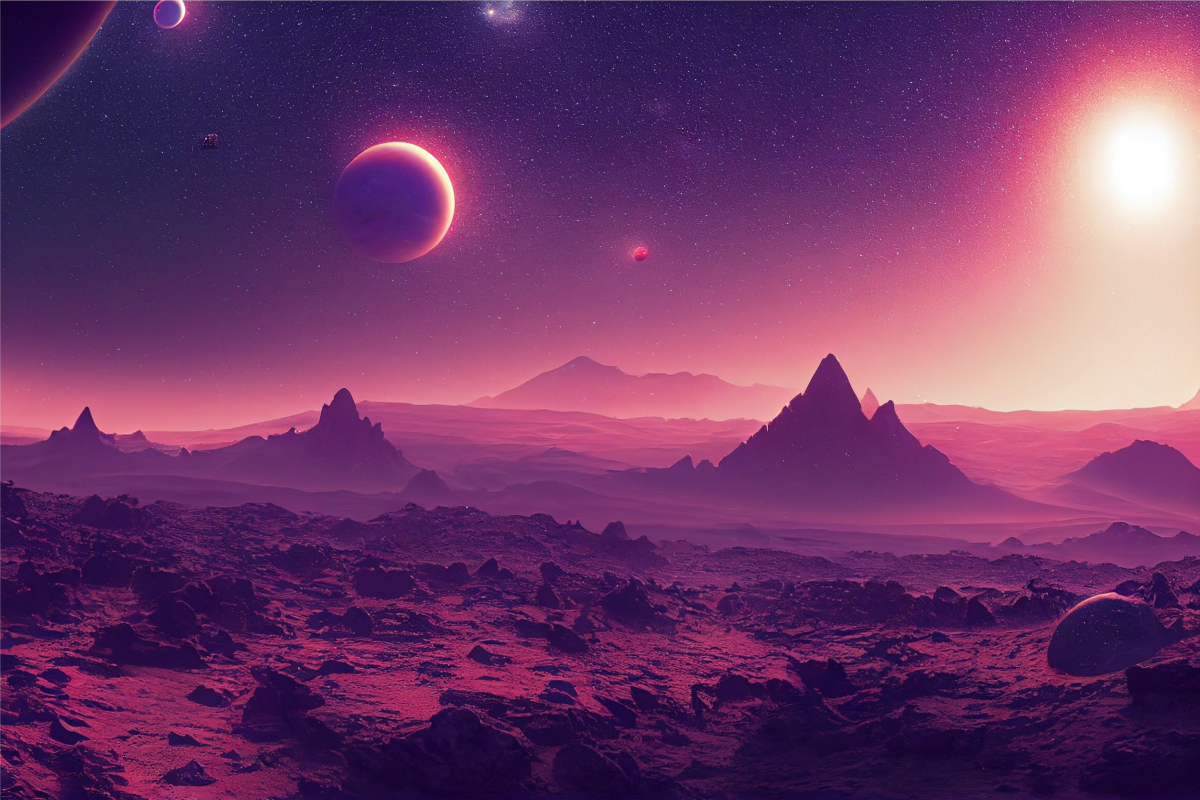Oxygen on Mars? The Chinese robot can search for the optimal manufacturing method on the Red Planet completely autonomously. Artificial intelligence should help with this.
Too much carbon dioxide, too little water, too much solar energy, too much rock – conditions on Mars are not ideal. From a human point of view, the main thing missing is oxygen. So how can oxygen be produced as efficiently as possible on the Red Planet?
With artificial intelligence, says a Chinese research group. It has in trade magazine “Synthesis of nature” The robot presented. Thanks to artificial intelligence, he can work in a small laboratory on Mars in the future: he must find the ideal way to produce oxygen completely autonomously. Due to the great distance to Mars, the robot cannot be controlled in real time, but thanks to artificial intelligence, the robot can not only work completely autonomously, but also become better and better – this is the plan of the research team.
The robot searches for the perfect stimulus
The robot primarily needs water to produce oxygen. Now there is more and more evidence that… Large amounts of water under the surface of Mars condition. Oxygen can be obtained from water – with electrical energy from solar systems and by the perfect catalyst that makes the necessary chemical reaction possible.
This is where the artificial intelligence robot comes into play. The best catalyst is supposed to be produced from Martian rocks so that oxygen can be produced from water as well. It’s a so-called electrocatalyst, which is supposed to use solar energy to stimulate oxygen production.
In its search for the best catalyst, the robot repeatedly mixes rock samples differently and uses them to develop new catalysts, which are then tested directly. How much oxygen is being produced now? How can more oxygen be produced? Using artificial intelligence, the robot analyzes the results and designs new predictions and plans for new stimuli. Thanks to AI, it’s getting better and better.
Successful first tests on Mars rocks
The robot has now completed its first tests on Earth, including real Martian rocks that fell to Earth millions of years ago in the form of meteorites. The robot was given five different types of rocks to test. In theory, this creates more than 3.7 million possibilities for producing a catalyst.
To test them all, a robot without artificial intelligence would need more than 2,000 years. Thanks to artificial intelligence, the robot does not have to go through all the options and find the perfect catalyst to produce oxygen in a matter of weeks.
The Chinese research team has so far only experimented with robots in the laboratory. Robots, especially small chemistry labs, still need to be developed to work on Mars. The experiments were conducted on Earth at a temperature of 37 degrees below zero to simulate cold temperatures on Mars. In addition, the robot had to ensure in the laboratory that the solar energy available for the chemical reaction on Mars is much less than on Earth.
NASA already produces oxygen from carbon dioxide
The Chinese research team describes the experiment as the first proof of concept and primarily wants to demonstrate new possibilities for oxygen production. NASA currently has other plans. The US space agency is trying to produce oxygen from carbon dioxide using a pre-programmed robot.
95 percent of carbon dioxide is in the atmosphere. On the other hand, water must be obtained from Martian soil through a laborious process. NASA was able to produce oxygen using the Mars rover Perseverance as early as June 2023. The Moxie instrument produced 12 grams of oxygen in one hour during a June test. Now NASA is working on a larger instrument.

“Tv expert. Hardcore creator. Extreme music fan. Lifelong twitter geek. Certified travel enthusiast. Baconaholic. Pop culture nerd. Reader. Freelance student.”







More Stories
The science behind the “Three Body Problem” – so you can finally have your say
Seventh place was possible!
Exercise improves women's quality of life in old age – exercise recovery